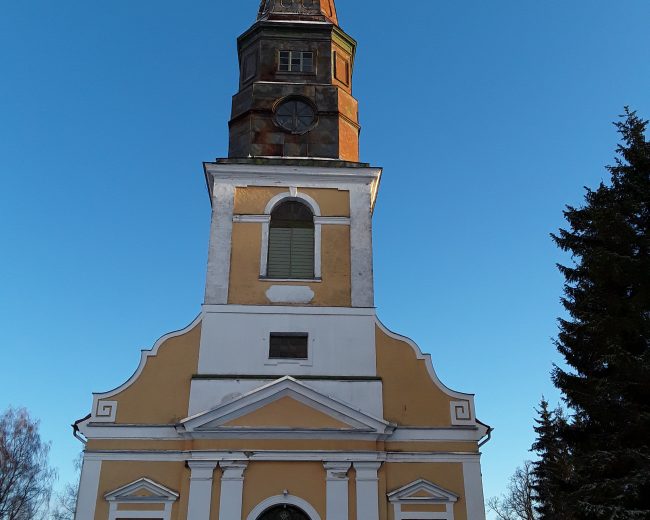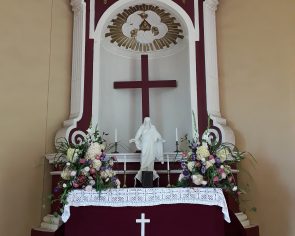Suntaži Lutheran Church
This church has managed to protect significant historical and artistic relics despite the ignorance experienced during the Soviet era in Suntaži. These relics are important not only in the context of the Vidzeme highlands!
The place is available for a wide range of people.
The church that has survived to this day is not the first building in this place, as several wooden churches were located here before that. The Christian colonizers chose this place on purpose because a Livonian holy place had been located here before.
The church was used as an ammunition depot during World War II. In times of Soviet occupation, the church was repeatedly attacked by vandals.
"The current church building was built in 1780-1782. The church was built in the classicist style according to the project of Christoph Haberland. In 1874-1875, the church underwent a thorough reconstruction. As a result, it acquired new equipment and also a new altarpiece in 1878. The author of the altarpiece was Juliuss Gottfried Sigmunds.
It is an architectural monument of national importance. The interior objects of the church – the altar, pulpit, pews, organ prospectus and triforium are 19th century art monuments. The church bell is one of the largest among Latvian rural congregations. The church is active.
Next to the church there are the burials of soldiers of World War I, which were replaced by graves of Soviet soldiers after World War II. In 1973 the monument erected during the Republic of Latvia was also transformed. The stars characteristic of Soviet symbolism were added to the existing limestone monument, and a similar triangular metal structure was installed next to it. An approximately 1.5 m high entrance gate with the year numbers 1941 and 1945 was installed next to the church."
Available from the outside at any time of the year.




Working time
The church is always accessible from the outside.
Open to visitors during the service on the 2nd and 4th Sunday of every month at 2pm

